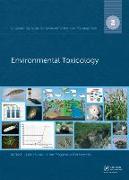- Start
- Engineering Tools for Environmental Risk Management
Engineering Tools for Environmental Risk Management
Angebote / Angebote:
Chemical substances, physical agents and built structures bear various types of hazard due to their immanent toxic, mutagenic, carcinogenic, reprotoxic and sensitizing character or being destructive for the immune and hormone system. The first step in managing the environment contaminated by chemical substances is to characterize the hazard and quantify their risk manifested when the chemical substances interact with the environment. Chemical models - using only chemical analytical data - are still the most widespread ones for the assessment of adverse effects and the fate and behavior of chemicals in the environment. The chemical models rely on the assumption that the adverse effect is proportional to the concentration, which does not apply in most cases. Other models, such as biological and ecological ones or the regression models are discussed in detail and compared to each other. Environmental risk management has two compartments: risk assessment and risk reduction. Environmental risk comes to a large extent from adverse effects of chemicals and contaminated land, that is why measuring and testing these adverse effects play a key role in risk management.
"Environmental Toxicology" deals with direct measurement of adverse effects of pure chemicals or environmental samples. This book overviews hundreds of standardized and non-standardized, generic and site-specific, conventional and innovative, animal and alternative test methods and demonstrates the utilization of their results for the purposes of regulation and managing environmental risk. The volume gives a general overview on environmental toxicology adapted for engineers. In addition to human, aquatic and terrestrial toxicity measuring methods, new trends in environmental analytics and the integration and complementary use of chemical analyses and the testing of effects are described. Bioavailability and accessibility as key parameters are detailed and the interactive and dynamic testing for their characterization is introduced. Great emphasis is placed on the evaluation and interpretation of environmental fate and adverse effect data as well as the simulation of environmental processes and effects in microcosms and mesocosms.
Lieferbar in ca. 10-20 Arbeitstagen
